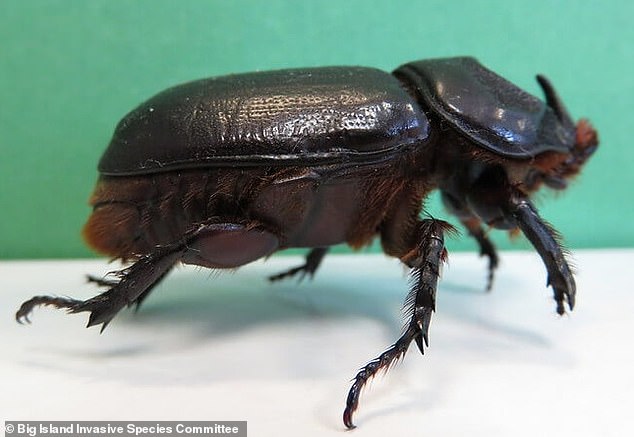Hawaii’s tropical landscapes, famous for their swaying palms and lush greenery, are under siege.
A relentless invader, the coconut rhinoceros beetle, is wreaking havoc on the islands’ beloved palm trees, leaving communities worried and residents mourning the rapid destruction.
Since first arriving on Oahu in 2013, the beetle has killed hundreds of trees and damaged over a thousand more.
While some locals hold out hope, others fear the battle to save Hawaii’s iconic palms may already be lost.
The Spread of the Coconut Rhinoceros Beetle
The invasive beetle, native to Southeast Asia, has steadily made its way across the Hawaiian islands.
Oahu and Kauai face the worst infestations, with Kauai first overrun in May 2023.
Maui reported its first cases in September 2023, followed by the Big Island a month later.
The beetle has now reached Lanai as of May 2025.
Residents have shared their heartbreak online, posting pictures and comments about dying coconut palms in their neighborhoods.
One Facebook user wrote, “Went to one of my favorite places out west today… every single coconut tree there is dying.
The Coconut Rhino Beetle has literally killed them all.” Another lamented, “Oahu is losing the war against CRB — the invasion was known about 12 years ago!”
How the Beetles Damage Trees
The coconut rhinoceros beetle is a relatively large insect, measuring about 1.18 to 1.38 inches long and 1.2 to 1.4 inches wide.
It burrows into the crown of palm trees — the very top where new leaves grow — feeding on sap and destroying developing leaves essential for the tree’s survival.
Females lay roughly 30 eggs at a time in dead palms, stumps, or logs, creating a cycle of infestation that is difficult to interrupt.
The beetle also feeds on banana plants, papayas, pineapples, and other crops, broadening the threat to Hawaii’s ecosystem.
Efforts to Fight Back
State officials have explored various methods to curb the beetle’s spread.
Hawaii considered chemical treatments and biological controls, while New Zealand has successfully used a nudivirus to kill beetles through infection.
However, Hawaii’s beetle population differs from that in New Zealand, meaning treatments must be carefully tested before use.
Pesticides have shown promise, and the Hawaii Invasive Species Council is researching long-term solutions, including fungal treatments. Yet these measures are not fully regulated, leaving much of the responsibility to individual residents.
How Locals Can Help
Authorities stress that protecting Hawaii’s palms requires community effort.
Proper management of green waste, targeted chemical treatments, and support for ongoing biocontrol research are the most effective strategies.
“The most effective approach combines proper green waste management with targeted chemical applications when necessary, supported by ongoing biocontrol research efforts,” the council said.
A Call to Protect Hawaii’s Natural Beauty
The coconut rhinoceros beetle is more than a pest — it is reshaping Hawaii’s landscapes and threatening the lush tropical scenery that defines the islands.
As the battle continues, residents and visitors alike are being urged to stay vigilant, protect green spaces, and act to preserve Hawaii’s natural heritage before more trees are lost.
Share on Facebook «||» Share on Twitter «||» Share on Reddit «||» Share on LinkedIn
